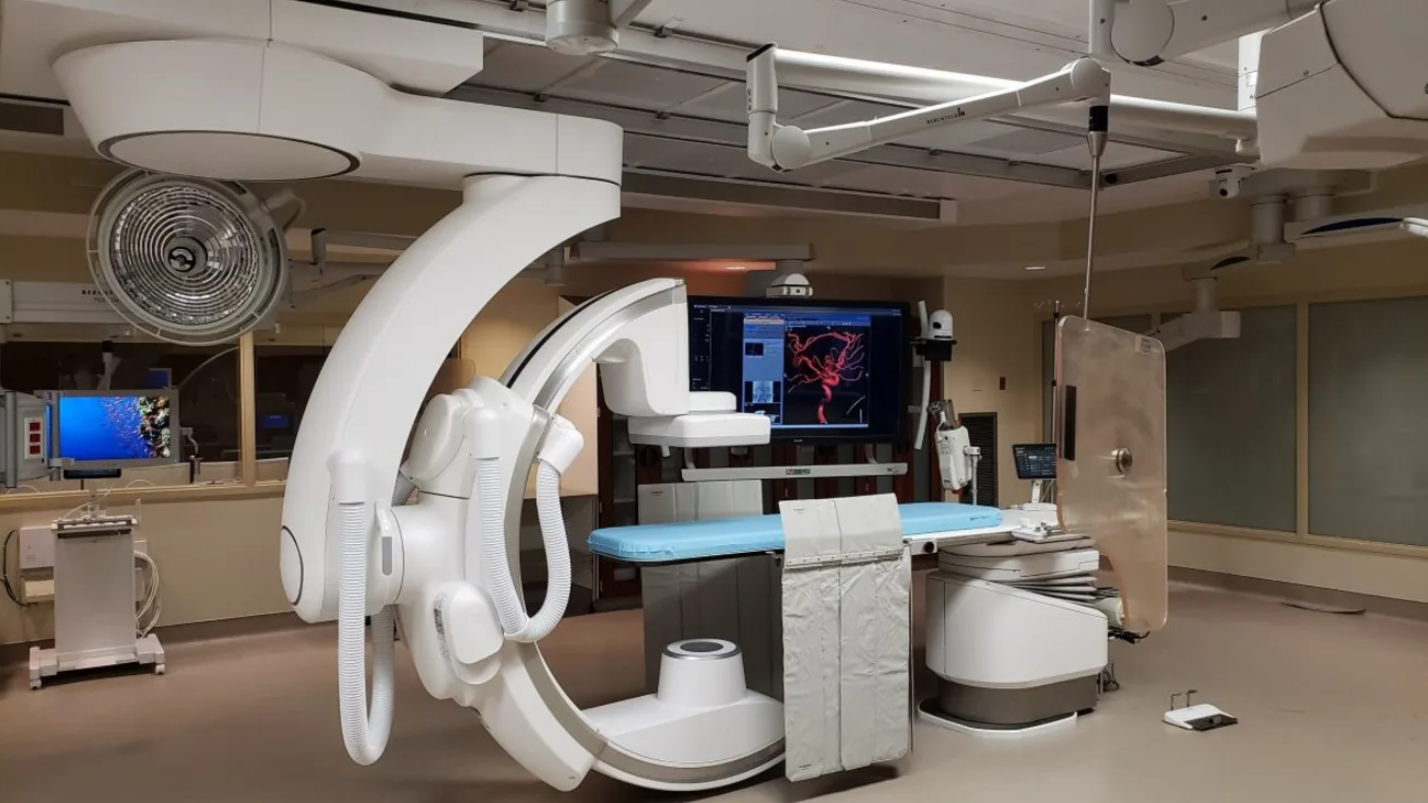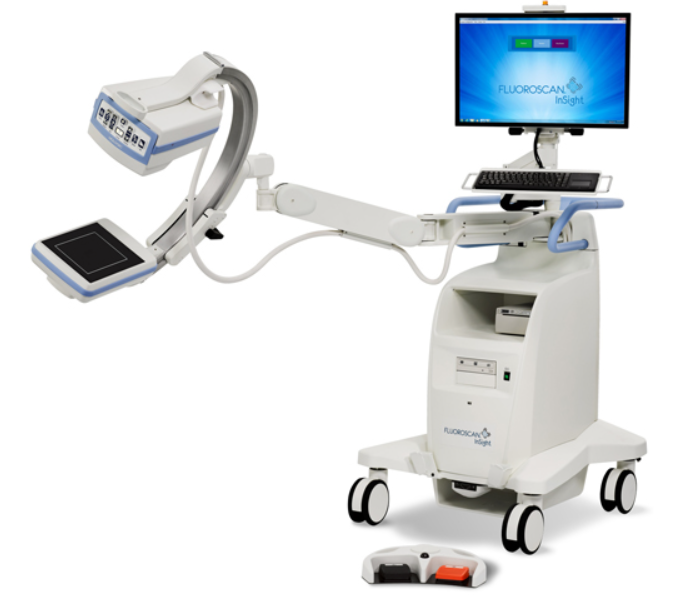PPE in Clinical Settings during Fluoroscopy1
Staff in a room with a Large C-arm or fixed equipment in operation require the following shielding:
- Lead apron, vest, skirt with 0.5mm lead equivalent protection
- Lead glasses for angiograms in fixed rooms
- Overhead shields and table drapes should be used if not impeding procedure

Figure 1: example of Large C Arm

Figure 2: example of mini C Arm
When using a mini C-arm:
- The operator must wear PPE
- All staff working within 1 meter of the image detector must wear PPE
- PPE must be a minimum of 0.25mm Pb equivalent
Why protective gloves are discouraged
Staff should not wear lead or lead equivalent glove, or gloves with other radiation-attenuating properties, during a radioscopic procedure.
Gloves that enter an imaging field temporarily decrease the brightness of the screen. The system will respond by increasing radiation output to improve penetration:
- This will lead to a higher dose to the patient, less image contrast and may increase scatter radiation to staff, and hand dose will remain relatively unchanged.
- Gloves also reduce tactile sensation, which could increase overall procedure time and thus patient and staff dose from the procedure.
To learn more about Radiation Protection, see this course on the LearningHub.